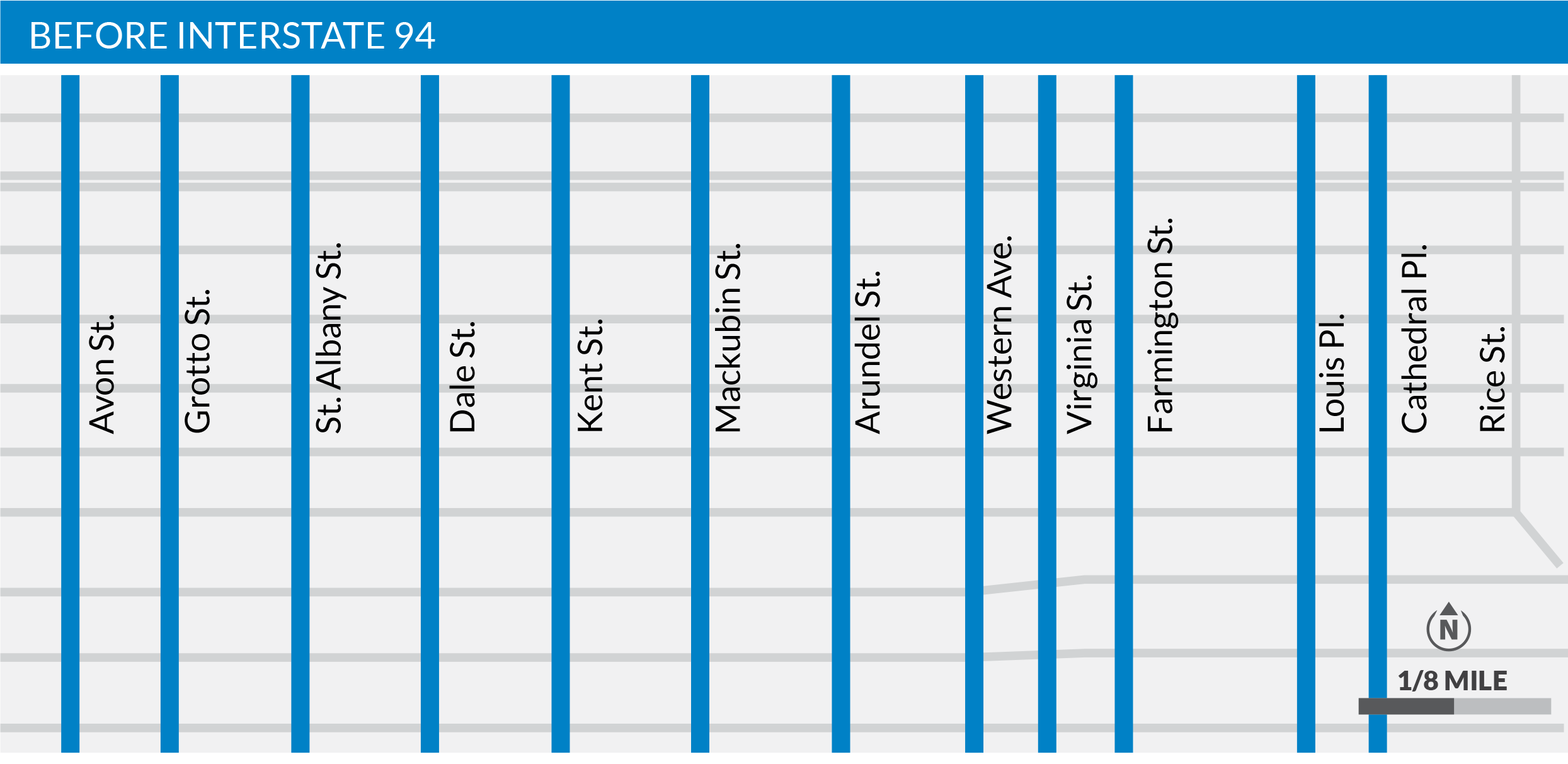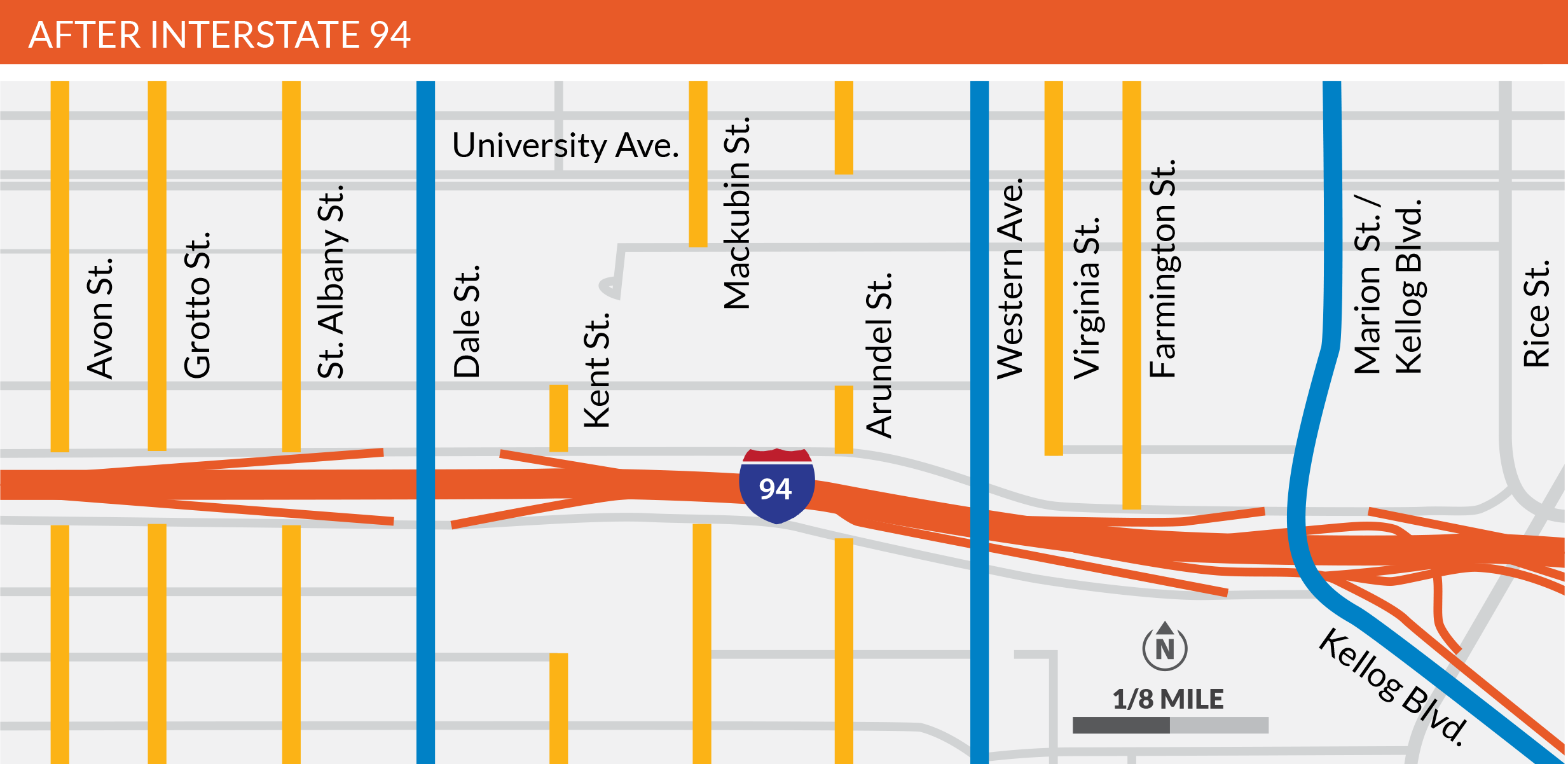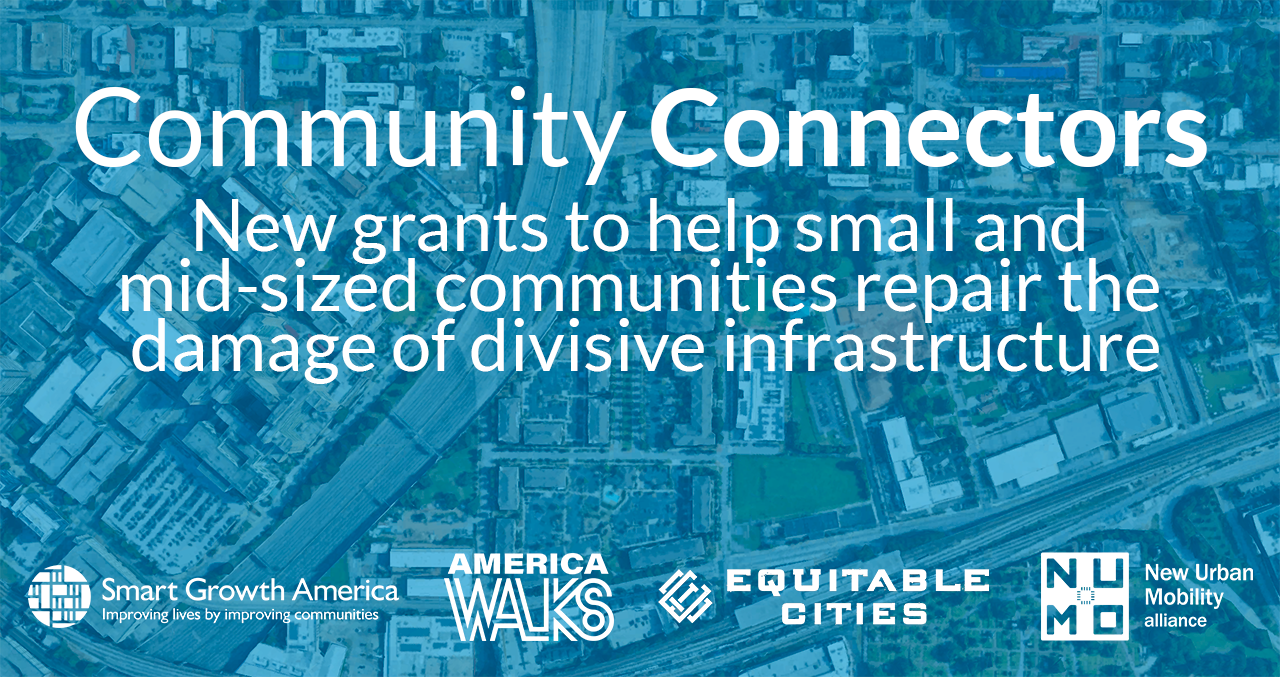Things DOTs say: “This will save people time and money!”
Value of time is the way transportation agencies assign monetary value to the expected time-savings that a proposed transportation project will deliver to users (almost always meaning drivers). And when moving vehicles quickly on all roads is the number one goal for transportation agencies, agencies focus on time savings to drivers at the expense of nearly every other type of user or activity.
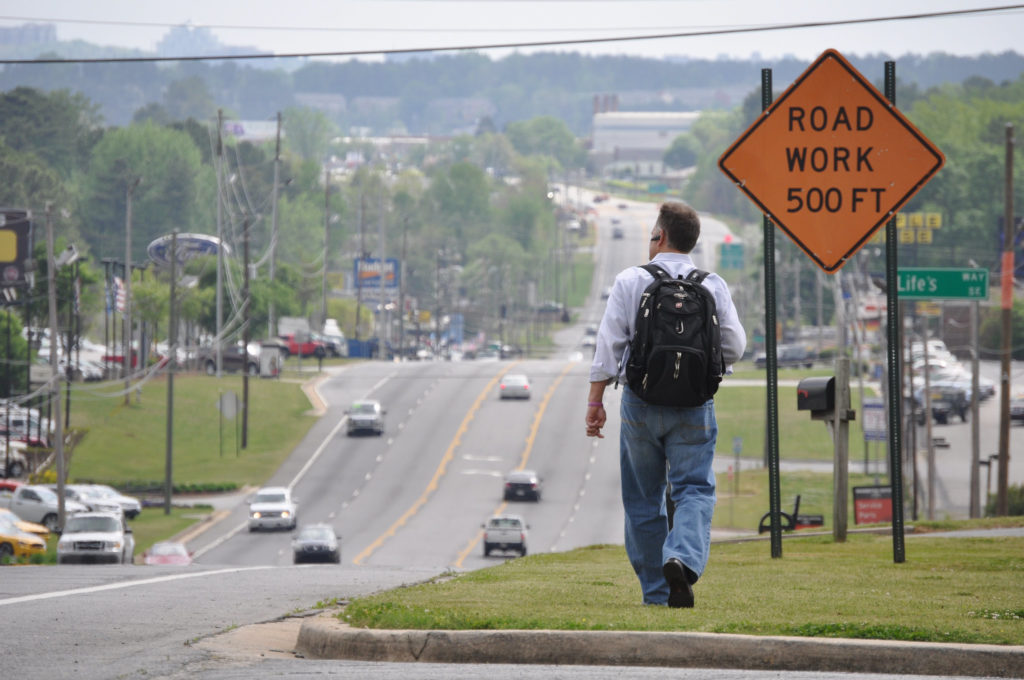
Focus on time savings to drivers at the expense of nearly every other type of user or activity can help justify projects like this, or prevent safe crossings from being added. Photo by Steve Davis.
What is value of time?
USDOT’s guidance, for instance, states that saving one driver one hour of time per year is equal to $18.80 in benefits. While time is not the only benefit of a transportation project that can be measured (others include safety, carbon emissions, economic impact, etc), most calculations are so heavily weighted toward time-savings that it drowns out other benefits. When modeling for time savings, agencies predict that, if cars travel faster, their new project will save time, which is nearly always assumed to be a net positive with economic value.
Watch our detailed video about the value of time here
We also explain this concept in Divided by Design, which explores how the transportation program of the 1950s and 60s was used to displace and divide communities, and how today’s modern transportation program was built on the same rotten foundation, using all the same models, measures, and standards—including value of time.
How is the value of time used?
The most common use of the value of time is in benefit-cost analyses (BCAs) performed when planning a project. BCAs are a process by which the measured dollar value of costs and benefits are compared so that decision-makers can determine whether the project is worth the cost.
The cost side of the equation is based on agency estimates, which can be more concrete (though wildly underestimated, as every over-budget project in history shows.)
But the benefits side is where things get really tricky. A real BCA requires measuring all the benefits: economic growth, pollution reduction, time savings, safety improvements, value of repairs, etc -to be calculated. For transportation projects, the US Department of Transportation (USDOT) has 2023 guidance for calculating the dollar value of all sorts of benefits. But a good BCA should also calculate any disbenefits, which are harms of the project, and subtract them from the benefits. For example, a project may have travel time savings for a driver while creating safety hazards for pedestrians. The value of the latter disbenefit should be subtracted from the value of former benefit. This is rarely done.
Why is value of time problematic?
Before explaining some specific problems, perhaps it’s easiest to see a specific example from Divided by Design:
How the use of the “value of time” decimates communities
This example from St. Paul, shows how highway projects can be justified by saving potential thru-commuters seconds per trip, while failing to measure the impact of disconnecting these streets and making all other trips significantly longer.

Left: The interconnected 1950’s street grid west of downtown St. Paul, MN provided people in these neighborhoods with many convenient potential routes and options—walking, driving, transit—for all of their trips. Right: In the 1960s I-94 severed at least eight of those north-south routes, making all other trips longer.
In similar projects today, when attempting to measure time savings, agencies only measure vehicle speeds in the orange highway corridor. The disruptive impacts to the people who live on either side of the new road, and the trips they take, are rarely measured or considered.
Here are several specific problems with the way we apply the value of time:
One, travel times are a measure of speed and distance, but this approach only looks at speed as a proxy, because actual trips with an origin or a destination are not measured. That means that if an agency projects that their planned investment will speed up vehicles then they can quantify that as time savings, regardless of whether or not it helps improve actual trip times.
Time savings can also be claimed even if:
- The modeling relied upon is often inaccurate and poorly calibrated to community conditions.
- The modeling relied upon does not include a consideration of induced demand;
- While speed is sometimes increased, a project may do this by increasing the length of the trip (e.g., a road disallows left turns to keep traffic flowing which requires drivers to go out of their way to reach a destination);
- Trips on the corridor are sped up but the trips for people trying to cross the corridor can be slowed or extended, leaving people with time penalties that are not considered. (As illustrated specifically with the St. Paul example above.)
This often leads to inequitable results. For example, a project reducing intersections or crosswalks on a highway to avoid delay for vehicles can tout the value of saving time for wealthier (often white) suburban travelers passing through a community while not measuring the time penalty that project causes to the poorer local traveler (often BIPOC and outside a car) trying to cross.
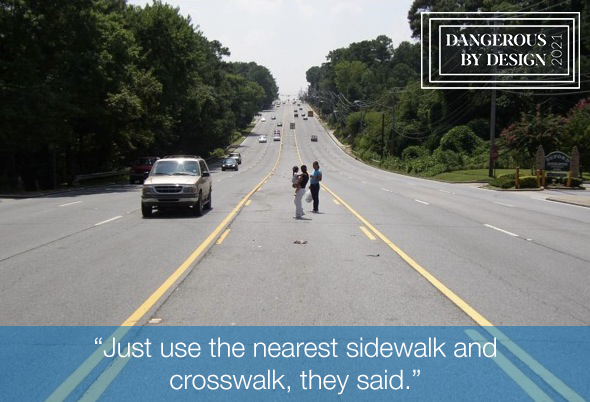
Two, the value of time guidance from USDOT puts heavy value on trips made for a business purpose. Since most measurable time savings come from dealing with rush hour traffic over off-hour commutes, that is going to favor projects that benefit the better paid white-collar worker. The guidance is also very clear that this trip is valued higher than what it calls “personal” or “leisure” trips. It claims that the schedule of work, dictated by the employer, creates more structure for measurement.
But anyone who has to take children to school and daycare, where people are charged for every minute they are late would likely disagree. Or a patient who is late to their doctor’s appointment might point out that it can result in a penalty or a canceled appointment and a weeks long wait for a rescheduled appointment. Certainly qualified economists could quantify this if they wished.
Third, saving small amounts of time does not necessarily create any actual economic benefit. USDOT specifies a percentage of hourly income that should be used to determine the hourly rate of time savings, down to the imaginary dollar, and then they multiply this by the number of commuters, resulting in huge but fairly ridiculous numbers. 10 seconds saved times 30,000 trips per day times 260 workdays per year…
While the guidance specifically dismisses the notion that there is any minimum amount of time savings worth claiming, one has to question whether saving drivers an amount as small as 10 seconds (even if we could accurately project such a thing) has a measurable economic benefit. If you save a handful of seconds a month or a year, do you receive any actual cash back? In reality, many economists say that seconds or even a few minutes of projected time savings is just noise in the economic models. But this is used to justify millions of dollars of taxpayer expenditure on highway projects that can cause environmental damage and hardship to the community the project touches.
How can I fight it?
When your local or state DOT waves value of time in your face as a reason why a road widening needs to happen, you should ask them the following questions:
- Can you show me examples of past projections using your value of time metrics? Did your projections pan out?
- Have you quantified the travel time impacts for those trying to drive over the corridor or around it? Most value of time analyses only look at people driving on the corridor itself without accounting for displacement effects.
- Have you quantified the travel time impacts for those outside of a car?
- Have you considered the equity implications of who benefits from this project and who does not?
Community Connectors: tools for advocates
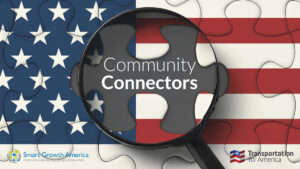 You may be fighting against a freeway expansion. You may be trying to advance a Reconnecting Communities project to remove an old highway. You might be just trying to make wide, dangerous arterial roads a little safer for people to cross. This Community Connectors portal explains common terms, decodes the processes, clarifies the important actors, and inspires with helpful real-world stories.
You may be fighting against a freeway expansion. You may be trying to advance a Reconnecting Communities project to remove an old highway. You might be just trying to make wide, dangerous arterial roads a little safer for people to cross. This Community Connectors portal explains common terms, decodes the processes, clarifies the important actors, and inspires with helpful real-world stories.





